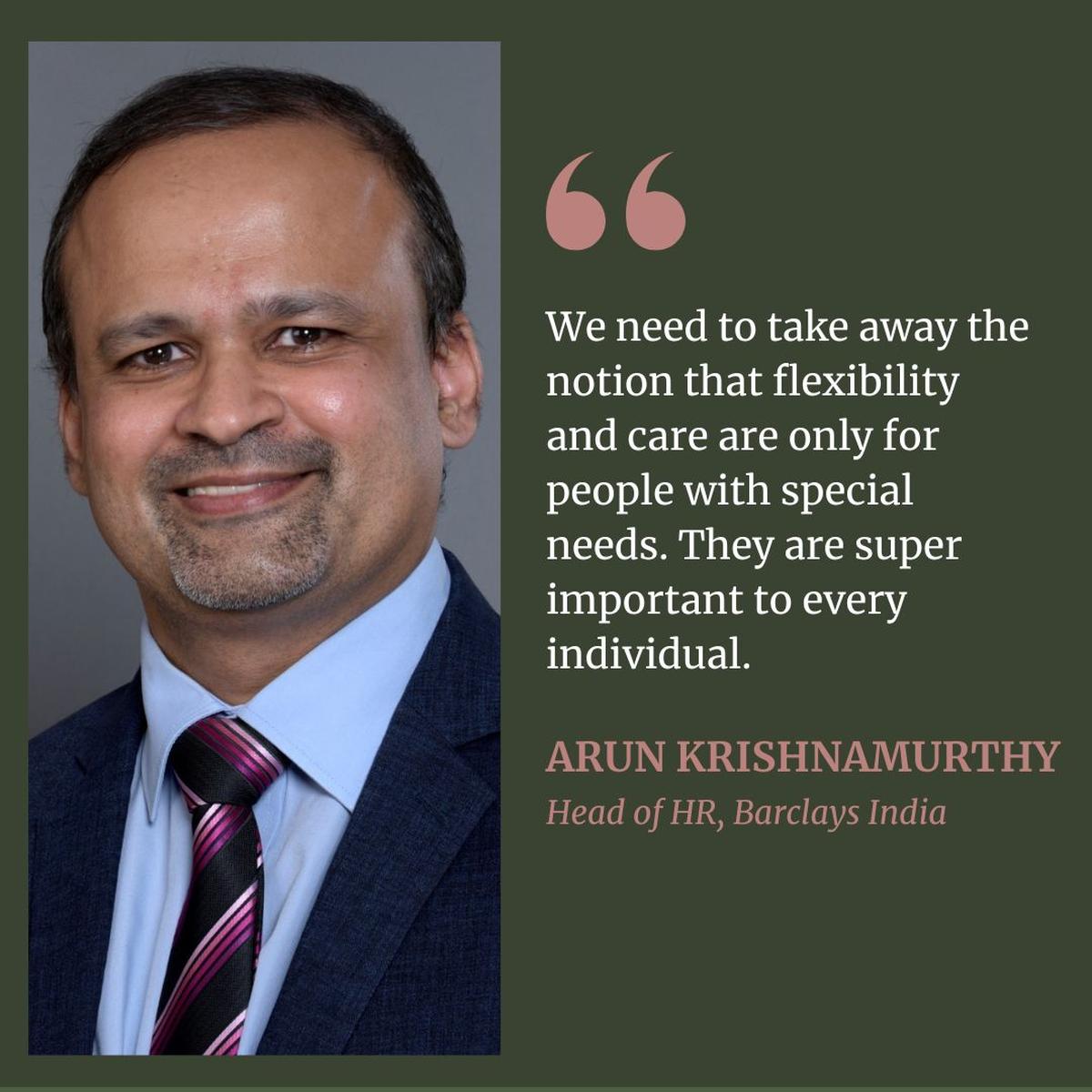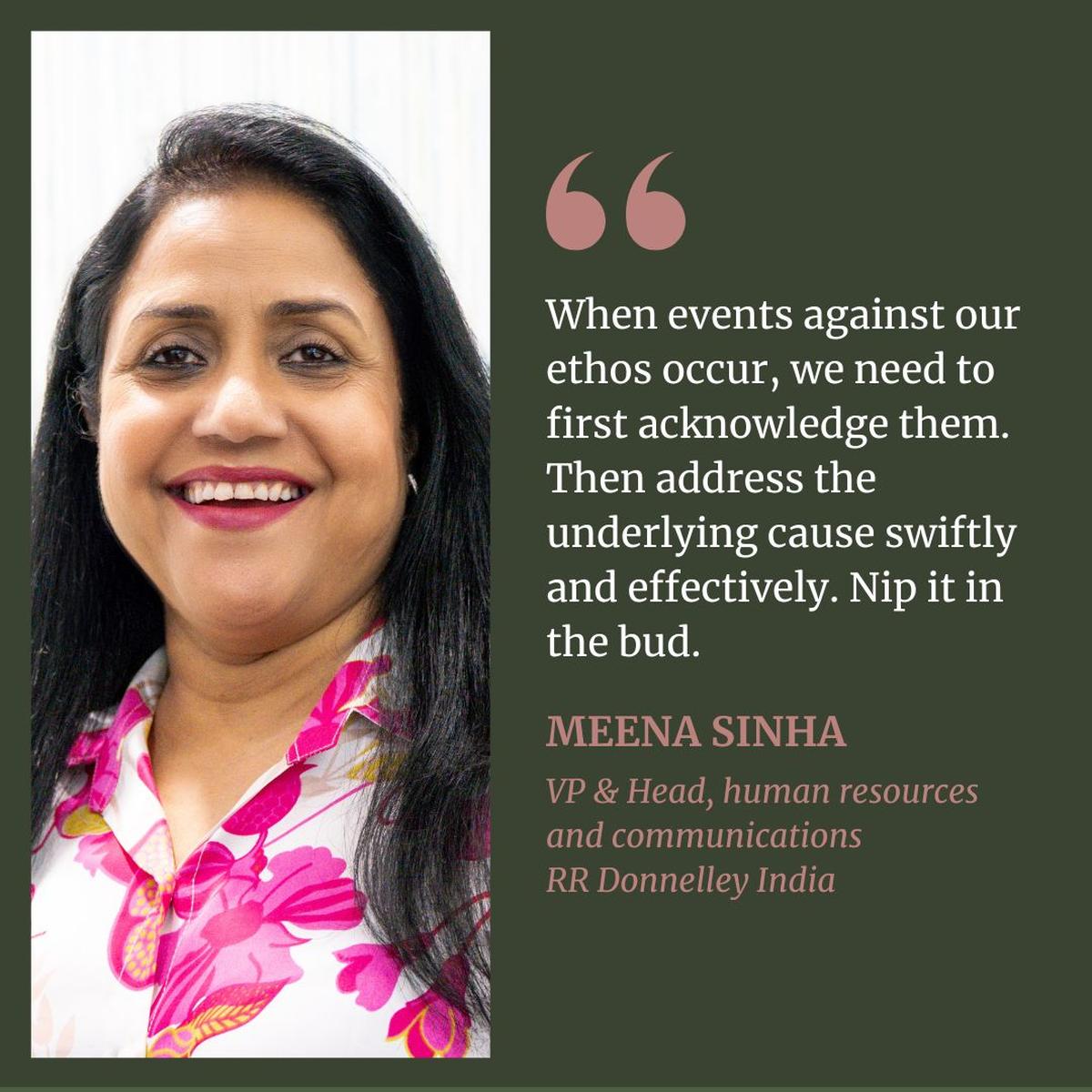What makes for a good workplace in India? | Top firms and HR heads share best practices and pointers

When Neela Badami moved back to her hometown Bengaluru in 2009 and interviewed with a law firm, she had one question for them: “Is this the kind of job that will allow me to go to the gym every day?”
The answer was yes and Badami came home to colleagues who understood that there was life beyond the office.
“In big law, I could not even say good morning when I walked in to the office,” she recalls. “It was almost as if, if you were happy and cheerful you didn’t have enough work. Everyone had their stressed face on by 9 a.m.” Badami says her company continues to draw “boomerang” employees or those disillusioned by the practices of bigger firms.
A searing last-days account by a grief-stricken mother recently revived the conversation around toxic workplace culture. After her 26-year-old daughter Anna Sebastian Perayil died due to work stress, Anita Augustine urged Ernst & Young chairman Rajiv Memani to reflect on the work culture in his firm. “Anna would return to her room utterly exhausted, sometimes collapsing on the bed without even changing her clothes, only to be bombarded with messages asking for more reports,” Augustine wrote in a widely-shared letter, narrating the life of an overworked, overburdened employee.

One junior Ernst & Young employee told me that after Perayil’s death, managers had “eased up a bit” and scheduled calls to “assess our well-being”, but that’s exactly the kind of knee-jerk reaction that companies with good work practices will tell you they strive to avoid. The 2024 Gallup State of the Global Workplace report reveals that 86% of Indians feel they are either “struggling” or “suffering”. The survey finds nearly half the workforce is “not engaged”.
That a happy employee is a productive employee is borne out by reams of research, and the efforts of some to question the efficacy and effectiveness of 70-hour work weeks, floated by a handful of corporate idols as the Indian ideal. Toxic workplaces may increasingly be the norm, but some companies stand out for the efforts they make towards employee welfare.


A happy employee is a productive employee.
| Photo Credit:
Illustration: Saai
Cricket and compassion
At LinkedIn India, Susan Mathew, director-human resources, describes an annual year-end shutdown that stretches from Christmas to New Year, offering employees the chance to “fully switch off and reset”. The company’s ‘PerkUp!’ programme allows employees the flexibility to use their allowances on anything from elder care and pet care to house cleaning and student-loan repayments. Other initiatives include a fortnightly dialogue with leadership and a day every month when people can team up to focus on personal passions, learning or community service.

Axis Bank has a Wellness Sherpa programme where counsellors train employees to provide “emotional first aid”. “We are cognisant of the fact that people reach out to friends within their team for support,” says Harish Iyer, senior vice president & head of diversity, equity, and inclusion. This is in addition to the bank’s small team of in-house counsellors and EAP (Employee Assistance Programme) service providers.
Barclays India employees have access to unlimited and confidential counselling support; the company organises a two-month long ‘Olympiad’ with games such as carrom, chess, table tennis, badminton, cricket and futsal (this year there are 70-plus cricket teams). Barclays was among those who persuaded insurers to include gender reassignment surgeries and hormone replacement treatments; and it has a generous hybrid work policy.

The four-year-old Barclays campus in Pune has a games arena, cricket nets and a tapas bar on the roof, multiple dining spaces, rest areas, a virtual reality zone with gaming consoles and a fully-loaded gym. It’s part of their holistic approach, says Arun Krishnamurthy, head of human resources, listing the five elements of mind, body, social, financial and workplace. “Only when all these elements come together can we say that we are concerned about employee well-being.”
Godrej Industries Group says it worked consciously this year to revise its caregiving policies. “We’ve strengthened the support we can give to new parents of any gender,” says Parmesh Shahani, head-Godrej DEI Lab. “That has included doing more for new moms, but also extended secondary caregiver leave, introduced support for eldercare, so that you can take time off and get better help for older people — and all of this is built on top of policies for care for the self, including for mental health support.” Unlimited sick leave and flexi-work options are part of a support framework for employees with chronic illnesses.

Modelling behaviour
Other companies keep managers accountable, not by monitoring work output but by tracking practices such as how many of their teammates they have acknowledged for accolades or how many late meetings they schedule and how they respect their employees’ chosen pronouns. Many firms have anonymous feedback mechanisms because they know that all office culture flows from the top. “More than policies and framework, role model behaviour is key,” says Meena Sinha, vice president & head, human resources and communications at RR Donnelley India.

Lavanya Garg, director of partnerships and people at Good Business Lab (GBL), a non-profit that works with businesses that employ blue collar workers to help them create better workplaces, says their work helped define their office culture. “Because our external mission is to get businesses to care better for their employees, we knew from day one that we would have to walk the talk. We don’t expect people to work over weekends, we have a minimum requirement of days off a year and a flexible leave policy. If you’re not taking enough days off, your manager will nudge you to do so,” says Garg. “We genuinely believe time away from work is important for employee well-being.” Parental leave — as GBL calls it — is 26 weeks for the primary caregiver and 13 weeks for the secondary caregiver.
GBL makes the business case for worker well being, highlighting its correlation with productivity. Inache, GBL’s anonymous redressal tool, allows workers on 50 factory floors across the country, many of them women, to register a grievance or give feedback through a call or text message. “Just having an avenue to report can affect how they feel about their workplace,” says Garg. Complaints can range from the quality of canteen food to the temperature on the factory floor or a supervisor who is creating an intimidating environment.

Colonial hangover
“‘Everything is urgent’, ‘you have to look at this right now’, ‘take your laptop with you’ when you go on holiday… is all nonsense,” says India Ashok, a Bengaluru-based neuropsychologist who works with companies to optimise their work culture, and a fierce proponent of the four-day week. Even Japan, a country with an employee shortage, a brutal work culture and a term for death due to overwork — karoshi — is experimenting with a shorter work week.
Ashok believes toxic workplaces are a remnant of colonialism, a monster that grew when India became the call centre for the U.S. in the 2000s. “American workers didn’t want to do the work that involved rotating shifts, staying up late. They found it cheaper to outsource and they didn’t care if shift work damaged our mental or physical health,” she says. Indian IT firms were the first to adopt this work culture.

“Shouting, scolding and public humiliation have become a norm in meetings,” a recent letter written by Securities and Exchange Board of India employees to the Finance Ministry says. The letter cites mistrust, lack of respect, pitting employees against each other and an atmosphere of fear.
Vineet Nayar, former CEO of HCL Technologies, was one of the few business leaders to directly address Perayil’s death, warning companies against “exploiting” young employees “under the guise of ‘training’ or ‘preparation for the real world’”.
Flexibility and care for all
There are many things a company can do to improve its work culture. “Actually put your money where your mouth is, and not do the greenwashing carewashing bit,” says Ashok. “Don’t offer stress management or yoga sessions when you notice people are quitting because of burnout.” She suggests companies leverage AI to take over some boring/ repetitive tasks.
RR Donnelley’s Sinha says that flexibility is key. “We understand and acknowledge that well-being means different things to different people, and there is no one-size-fits-all approach. So, we give employees choices,” she says. “For example, we do not have mandated training hours. Instead, we give them access to learning resources and curated courses they can take at a time and pace convenient to them.”
Barclays’ Krishnamurthy says it’s a mistake to look at the focus on well-being as being at the cost of productivity. “We need to take away the notion that flexibility and care are only for people with special needs,” he says. “They are super important to every individual.” Flexibility can only be normalised if top executives lead the way and utilise available perks, such as using a break in the workday to go to the gym or leaving early if their schedule permits.
As for how good companies react when bad things happen? “When events against our ethos occur, we need to first acknowledge them. Then identify not only the ‘what’ and the ‘who’, but also the ‘why’. Address the underlying cause swiftly and effectively. Nip it in the bud,” says Sinha. “Workplace toxicity can be detrimental in myriad ways, but only if we let it. We have the power to stop it.”
The writer is a Bengaluru-based journalist and the co-founder of India Love Project on Instagram.
Published – October 18, 2024 04:07 pm IST






